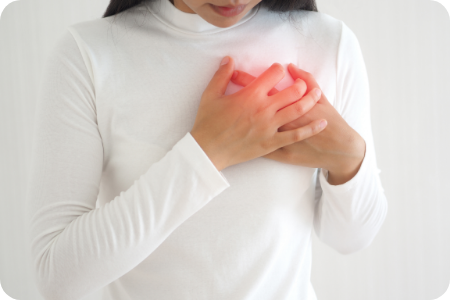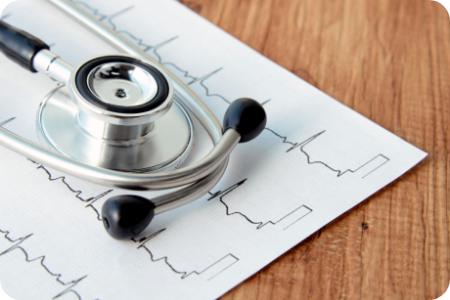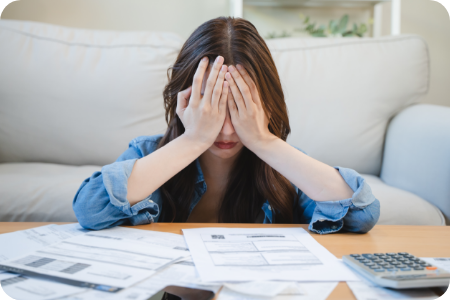Study
Learn About Sleep
What is sleep apnea syndrome (SAS)? What is the relaxed state during sleep?

Sleep apnea syndrome is a disease in which a person stops breathing when he or she falls asleep.
If left untreated, moderate or severe sleep apnea syndrome, in which breathing pauses of 10 seconds or longer appear more than 20 times per hour, can cause myocardial infarction, cerebral infarction, lifestyle-related diseases, and accidents caused by drowsiness, and has a very high mortality rate, so immediate treatment is necessary. (From e-Health Net, Ministry of Health, Labor and Welfare)
https://www.e-healthnet.mhlw.go.jp/information/dictionary/heart/yk-026.html
Sleep apnea syndrome is a disease in which a person stops breathing when he or she falls asleep.
We read the autonomic nervous system status during sleep from the heartbeat and define a state in which the parasympathetic nervous system is not dominant as "not relaxed during sleep.
We consider this state to be insomnia reserve. When insomnia persists, a variety of problems appear during the day. These include fatigue, low motivation, poor concentration,
depression, lightheadedness, dizziness, and loss of appetite.
What's scary about having SAS (Sleep Apnea Syndrome)?
The harmful effects of SAS can be divided into two categories.
1.Sleepy even during the day
Excessive daytime sleepiness makes it difficult for you to perform well, whether at work or in your studies.
If you are engaged in hazardous work, you need to improve to avoid accidents at work.
2.Complications such as other lifestyle-related diseases
Complications of lifestyle-related diseases are particularly common and more likely to be caused by SAS.
About 50% have hypertension
About 65% have diabetes mellitus
In addition, according to the "Sleep Apnea Syndrome (SAS) Guidelines 2020" by the Japanese Respiratory Society, about 50% of patients with SAS have heart failure and about 50% have hypertension,
About 50% have heart failure
Cardiovascular diseases such as arteriosclerosis
Metabolic syndrome
and metabolic syndrome. It also states that SAS and heart failure have mutually adverse effects.
How we are losing out in our daily lives!
But it's not just about loud snoring.
For those who say, "I would like to be tested, but I can't sleep if I have to wear a machine on my fingers or arms," we recommend the kokoromil test, which can be easily done at home by simply placing it on your chest.
Can SAS (Sleep Apnea Syndrome) be improved?
Sleep apnea is more likely to occur with age. The results of the kokoromil test to date show that even those with a low level of sleep apnea show characteristic heart rate variability several times a night, which may be associated with sleep apnea.
For those who have more, 15 to 30 or more apneas in a given hour are estimated. However, those who have it throughout sleep are rare, and it disappears when they fall asleep on their side.
In the kokoromil test, a B grade is given when a heart rate change of 20 or more apneas is suspected during a specific time period (per hour), and a C grade is given when 40 or more apneas occur.
If you have a SAS grade of B or higher and frequently experience excessive daytime sleepiness, a visit to a sleep clinic is recommended.
Poor quality of sleep!
The kokoromil test analyzes the autonomic nervous system during sleep, regardless of whether or not a person has SAS.
The results show that those with SAS invariably have a predominant sympathetic nervous system (not rested) during sleep.
On the other hand, some people without SAS have a decreased parasympathetic nervous system, which indicates a relaxed state during sleep.
Conversely, the parasympathetic nervous system may be dominant when awake.
In counseling, when I ask, "Do you often feel strong sleepiness during the day?" the patient is aware that he or she often feels sleepy during the daytime.
The state of relaxation during sleep is based on the theory of Dr. Kuratsune, Professor of Osaka Public University,
(1) When awake, the ratio of sympathetic nerves (LF)/parasympathetic nerves (HF) is greater than 1.
(2) During sleep, the ratio of sympathetic (LF/parasympathetic) to parasympathetic (HF) is less than 1.
(3) Sleep HF/wake HF ratio of 3 or more during sleep
(4) Sleep duration of 5 hours or more
The judgment is based on the following indicators.
Those who receive a B or C grade do not meet the criteria for more than one of the above indicators. Most B and C graders have problems with (2) and (3).
Please make a habit of improvement through mindfulness, aromatherapy, supplements, and other methods that suit you.
How to Read Reports
Grade A
Sleep Apnea Syndrome (SAS)
Sleep apnea syndrome (SAS) is defined as no apnea or only mild apnea.
Relaxed state during sleep
The sleep duration is 5 hours or more and the parasympathetic nervous system is sufficiently dominant during sleep.
Grade B
Sleep Apnea Syndrome (SAS)
Indicates that there were periods of time when more than 20 apneas were seen in an hour.
Relaxed state during sleep
Indicates that the patient slept less than 5 hours or that the parasympathetic nervous system was not sufficiently dominant during sleep.
Grade C
Sleep Apnea Syndrome (SAS)
Indicates that there were periods of time when more than 40 apneas were seen in an hour.
Relaxed state during sleep
Indicates that the sympathetic nervous system was dominant almost all the time during sleep.
Related Articles

Warning: Undefined array key "small" in /home/soleda1101/soleda-jeo.com/public_html/sample3/wp-content/themes/kokoromil/template-parts/linkBlock.php on line 6

Warning: Undefined array key "small" in /home/soleda1101/soleda-jeo.com/public_html/sample3/wp-content/themes/kokoromil/template-parts/linkBlock.php on line 6





